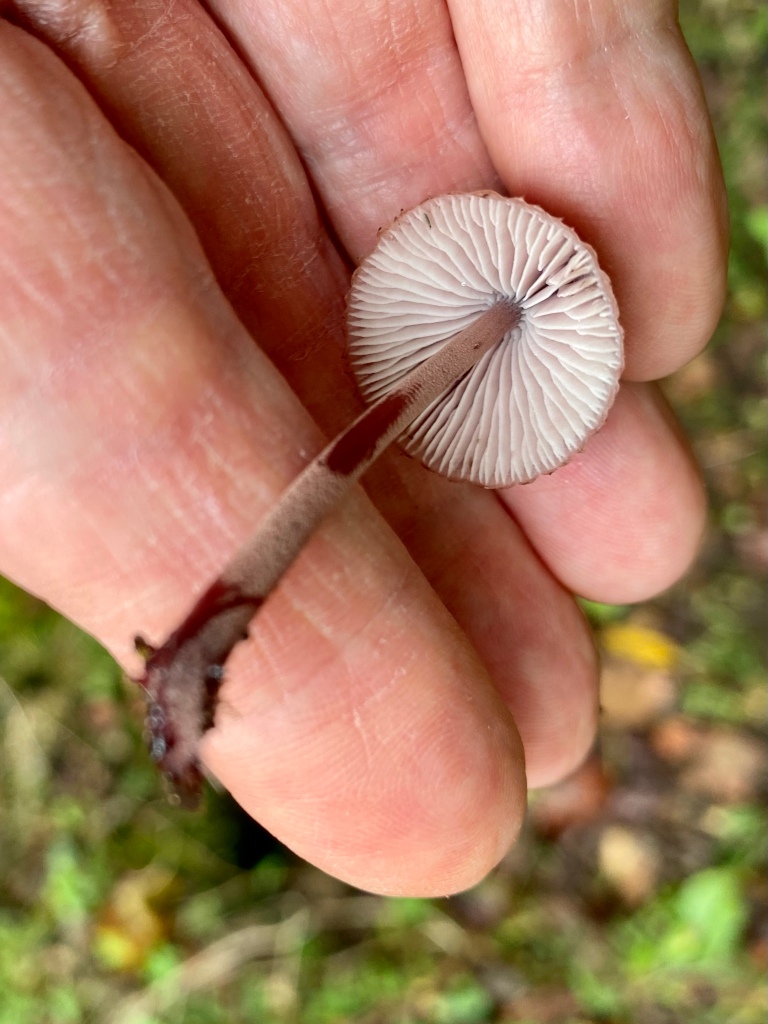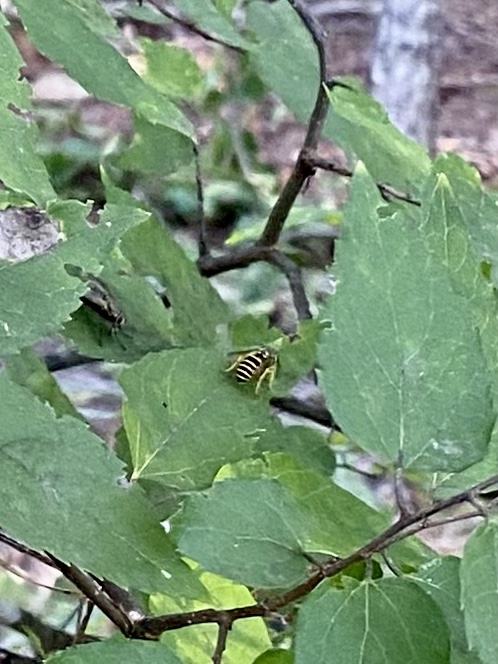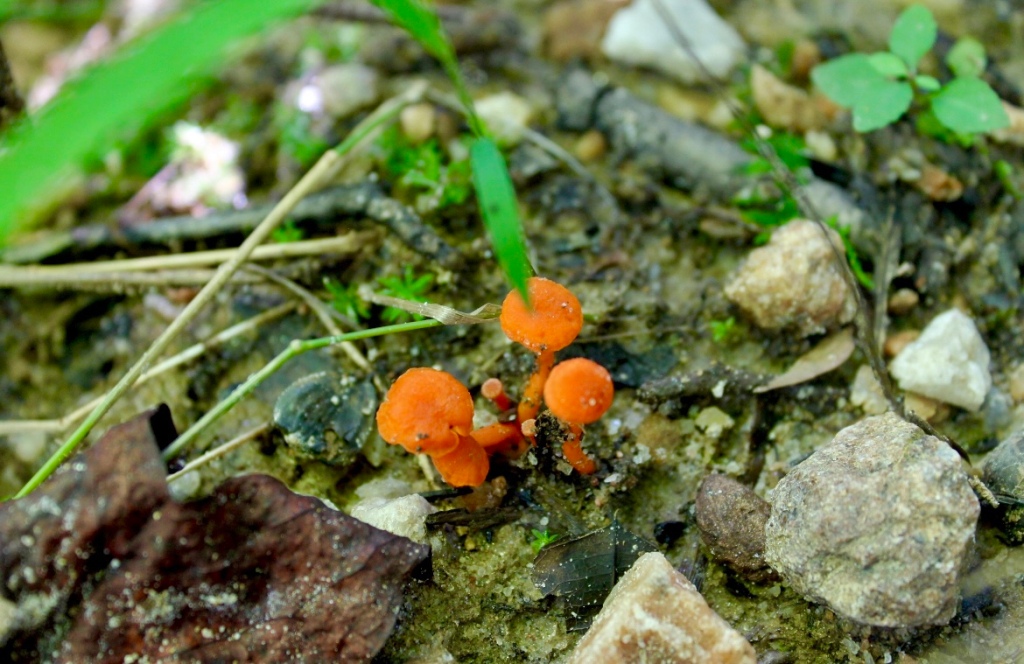We started at the south side of the property along the road and hung signs, cut small and dying trees and laid them along the path perpendicular to the water flow and trailblazed a new path. We wound around along the edge of Saint Andrew’s Forest Farm property line along the power lines. We also followed the waterway at bottom of property to property markers at southwest corner. We found interesting mushrooms, plants and finally found paw paw trees.
We did not see the young male black bear. We saw a small lizard in the clearing up top. We saw and heard many birds in the forest. Hunting season starts tomorrow. We’ve got our signs up and hope the animals hide out from those hunters. Especially the young black bear. We heard his range might be 5-10 miles for a young bear. For an adult bear, 10 to 20 miles.

Gentiana alba, a herbaceous species of flowering plant in the Gentian family Gentianaceae, producing yellowish-white colored flowers from thick white taproots. It is native to North America from Manitoba through Ontario in the north, south to Oklahoma, Arkansas and North Carolina, and it is listed as rare, endangered, threatened or extirpated in parts of this range.[2] Found near the south waterway.




Fruiting Body: 8-13 cm across before splitting and spreading; round or nearly round; very tough; partially submerged in the ground; surface when young fairly smooth, often covered with whitish down; with age becoming pocked, pitted, or minutely scaly in places, and usually covered with adhering soil and debris; often bruising reddish or yellowish when rubbed; with maturity splitting near the top and peeling back in irregular rays to expose the spore mass; skin to 5 mm thick or more, whitish but blushing pink when sliced; sometimes with white rhizomorphs attached to the base; odor not distinctive.


Fruiting Body: 2.5–6.5 cm tall; 0.5–1.5 cm thick; shaped more or less like a club, with a rounded tip; grayish to brownish when young, becoming dark brown to black with maturity; surface often becoming cracked and scaly with maturity; stem often proportionally long, but also frequently short or nearly absent, black, covered with black to rusty brown or reddish fuzz near the base; interior flesh white and tough; perithecia in mature fruiting bodies up to about 1 mm across, spherical, just below the surface. Found along the waterway.










































































